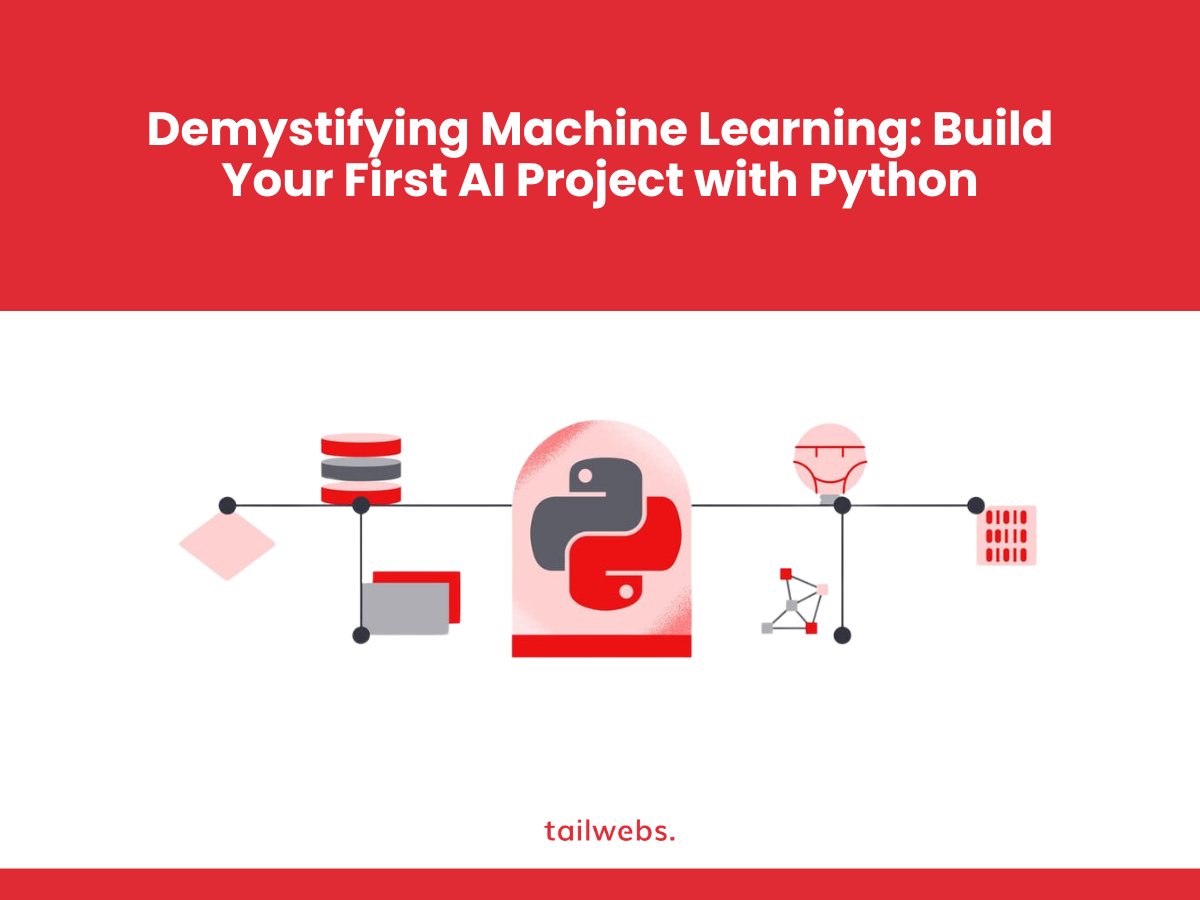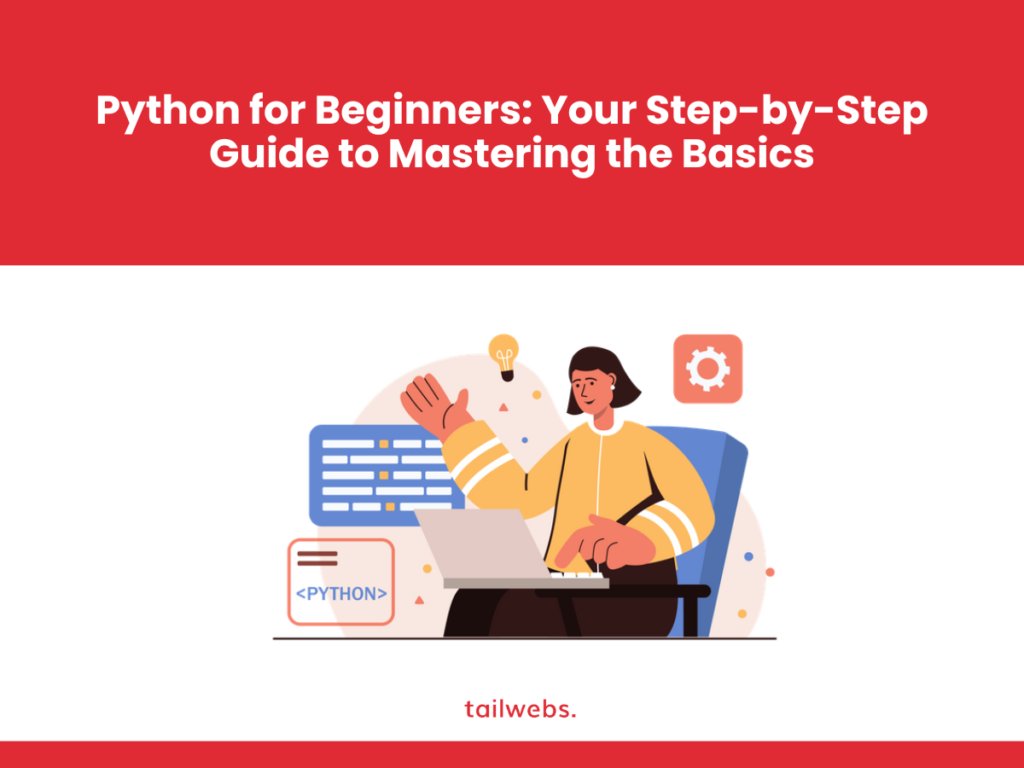The world of Artificial Intelligence (AI) may seem like an enigmatic, futuristic realm reserved for tech giants and researchers. But what if I told you that anyone with a basic understanding of coding and a curious mind can create their own AI project? With Python, one of the most popular languages for machine learning, the possibilities are closer than you think. This comprehensive guide will demystify machine learning, equip you with the fundamental concepts, and walk you through building your first AI project using Python, empowering you to unlock the potential of this transformative technology.
Unveiling the Mystery: Understanding Machine Learning Basics
Imagine machine learning as a student learning from experience. Instead of explicit programming, algorithms learn from data examples, identifying patterns and making predictions. Think of it as training a friend to recognize different fruits – they learn by seeing apples, oranges, and bananas, eventually predicting whether a new picture depicts another fruit.
Stats Highlighting the Rise of Machine Learning:
- The global AI market is expected to reach $1.76 trillion by 2025. (Statista, 2023)
- 80% of businesses believe AI will significantly impact their operations in the next five years. (Deloitte, 2023)
- Learning Python empowers access to AI, as 77% of data scientists use it as their primary language. (KDnuggets, 2023)
Composing Your AI Journey: Essential Python Libraries and Tools
Ready to start your AI adventure with Python? Here are the essential tools in your toolbox:
Python Programming Language:
Python offers a clear syntax and vast libraries specifically designed for AI development.
Jupyter Notebook:
This interactive environment allows you to code, visualize data, and experiment with machine learning algorithms seamlessly.
NumPy:
This fundamental library provides powerful tools for numerical computing and data manipulation.
Pandas:
Another essential library, Pandas helps you work with large datasets, organize them efficiently, and extract valuable insights.
Scikit-learn:
This comprehensive toolkit offers various machine learning algorithms for classification, regression, and more.
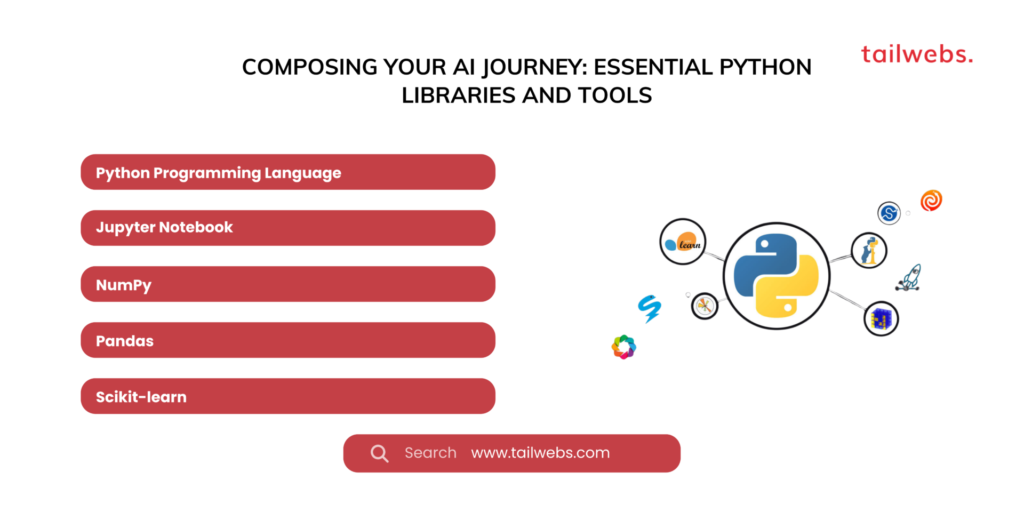
Beyond the Basic Notes: Building Your First AI Project
Let’s embark on building your first AI project – a spam email classifier. Imagine an algorithm that automatically sorts your emails, ensuring only important messages reach your inbox. Here’s the roadmap:
1. Prepare Your Data:
Collect a dataset of labeled emails, classifying them as “spam” or “not spam”.
2. Preprocess Your Data:
Clean the data by removing irrelevant information, handling missing values, and converting text to numerical representations.
3. Choose a Machine Learning Algorithm:
Scikit-learn offers various options for classification, like Naive Bayes or Support Vector Machines. Choose one based on your dataset and project goals.
4. Train Your Model:
Feed your preprocessed data into the chosen algorithm, allowing it to learn the patterns that distinguish spam from legitimate emails.
5. Evaluate and Refine:
Assess your model’s performance on unseen data, identifying areas for improvement. Fine-tune parameters or try different algorithms if needed.
6. Deploy Your Model:
Integrate your trained model into an email client or create a standalone application to automate spam detection in real-time.
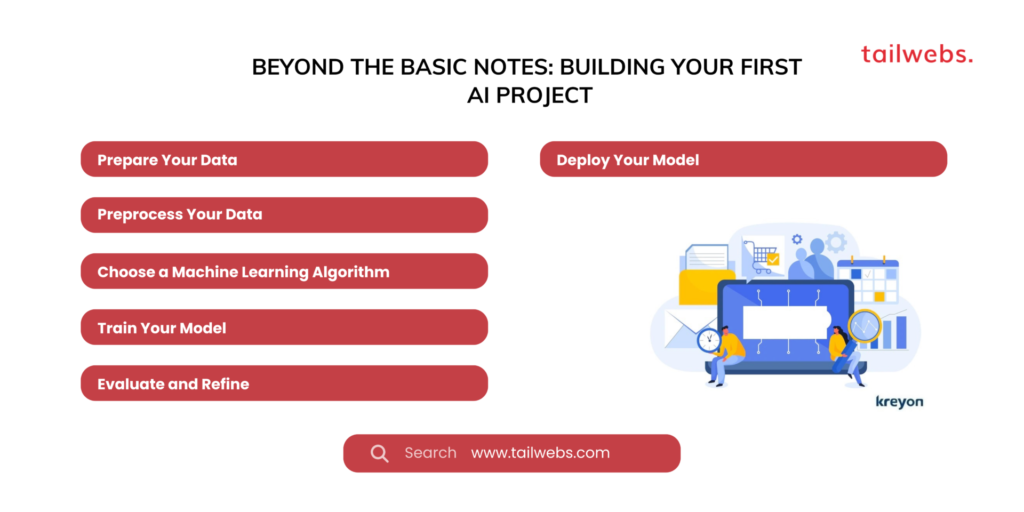
Recommended Resources and Online Courses:
- Python for Everybody Specialization: https://www.coursera.org/learn/python
- Machine Learning Crash Course: https://developers.google.com/machine-learning/crash-course
- Scikit-learn Tutorial: http://scikit-learn.org/stable/tutorial/index.html
- Kaggle Datasets and Competitions: https://www.kaggle.com/
Beyond the Basic Notes: Building a Symphony of Learning
Remember, the world of AI is vast and ever-evolving. Continuously learn, explore new projects, and challenge yourself. Consider these additional factors:
- Specialize in a specific area of AI: Image recognition, natural language processing, or recommendation systems are just a few exciting domains.
- Contribute to open-source projects: Join the vibrant AI community and collaborate on innovative projects.
- Focus on ethical AI: Consider the potential biases and societal impacts of your AI projects and develop them responsibly.
Ultimately, Learning AI Opens Doors to:
Solving real-world challenges:
Apply your AI skills to tackle problems in healthcare, climate change, or social justice, contributing to positive change.
Boosting your career:
AI expertise is increasingly sought-after, enhancing your employability and career prospects.
Unlocking personal creativity:
Use AI for artistic expression, generating music, writing stories, or creating unique visuals.
Empowering yourself:
Gain the confidence and problem-solving skills that come with understanding and building intelligent systems.
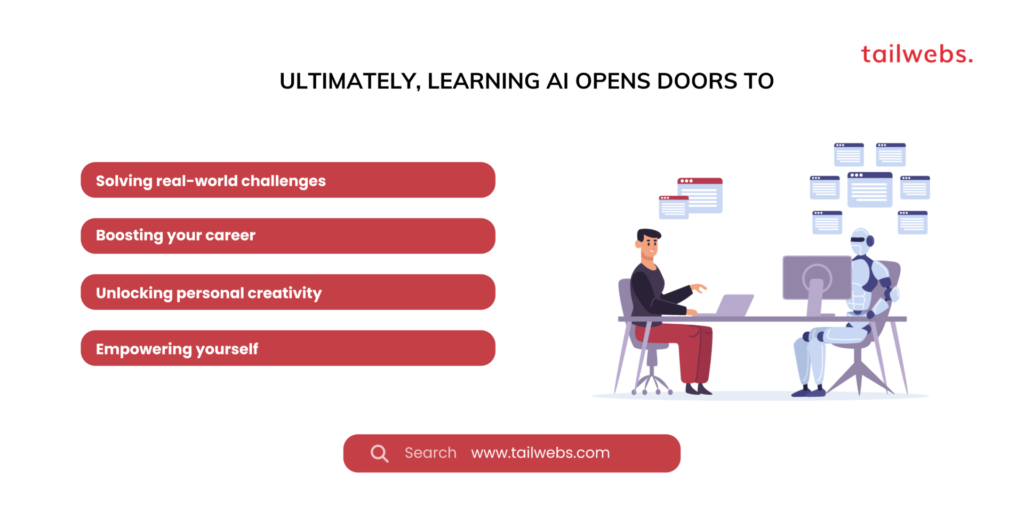
By embarking on your AI journey, you join a community of pioneers shaping the future. Remember, the true power of AI lies not just in technology, but in the hands of individuals who wield it responsibly and ethically.

